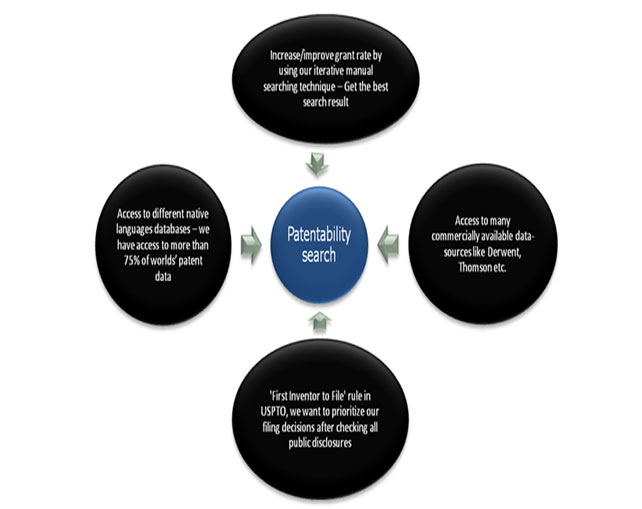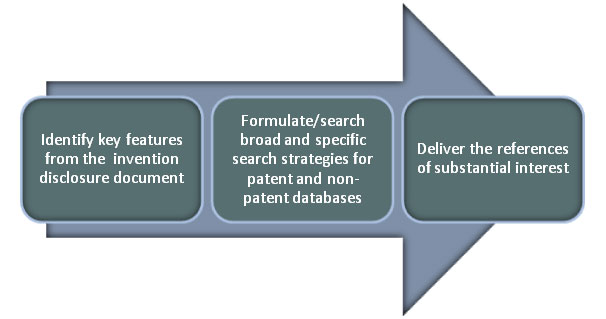A patentability search is performed to check whether an invention is
Do you know if anyone anywhere publicly discloses an identical inventive concept prior to its critical date - it can invalidate the patent? The cost of preparing, filing, and prosecuting a patent application is substantial and is much greater than the cost of a patentability search. One study suggests that conducting a patentability search improves the chances of receiving a patent. It identifies any patent or non-patent literature existing prior to the invention at hand.
A patentability search will usually include a search in major patent collections, normally encompassing at least the United States (US), European (EP), Patent Cooperation Treaty (WO/PCT), Chinese, German, Korean & Japanese patent collections. Most patent examiners from major patent offices will go straight to these collections.
Key benefits of this search:
Patentability search is a precise science due to the complexities and non-uniformity of the patents system. Online resources or inefficient search may give you temporary satisfaction; but for knock-out results rely on experienced & professional patentability search report only.
The cost of preparing, filing, and prosecuting a patent application is substantial and is much greater than the cost of a patentability search. One study suggests that conducting a patentability search improves the chances of receiving a patent.
The U.S. Patent and Trademark Office (USPTO) recommend that a patentability search be conducted as:
"A search of all previous public disclosures (prior art) including, but not limited to, previously patented inventions in the U.S. should be conducted to determine if your invention has been publicly disclosed and thus is not patentable. While a search of the prior art before the filing of an application is not required, it is advisable to do so." -USPTO on conducting a prior art search.
The European Patent Office (EPO) agrees that an inventor should obtain a prior art search:
"Where do inventors go wrong?"
When it comes to prior art searching, many inventors simply scratch the surface. By far the most common mistake they make is to assume that their idea is novel, when a simple patent search would tell them that it was not. They then make things worse by spending often large sums of money on an idea that is extremely unlikely to be commercially successful." -EPO on conducting a prior art search.

